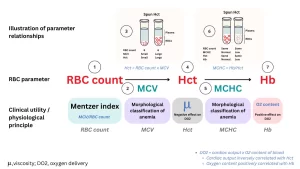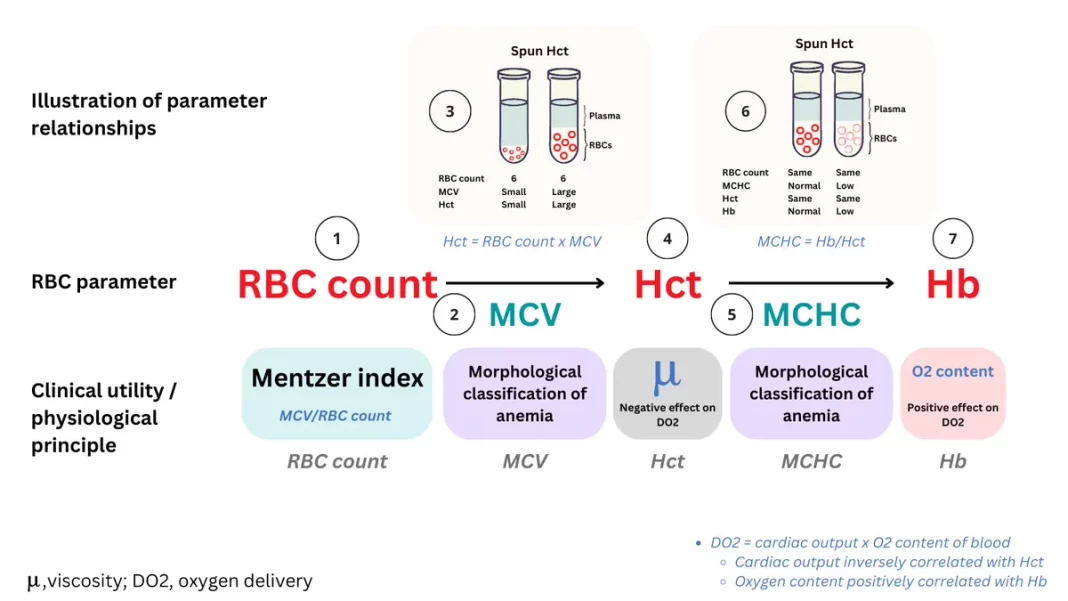OVERVIEW OF RBC PARAMETERS AND INDICES
Here is a fun graphic that ties together the relationships between RBC parameters:
1. RBC count gives us no information about Hct or Hb, but it can be used to help distinguish between thal minor and iron deficiency anemia (e.g., Mentzer index).
2. The only way to get from RBC count to Hct (without a spun Hct) is to consider the MCV (Hct = RBC count x MCV).

3. If the RBC count is held constant, the larger the cells the higher the Hct. Laws of physics!
4. With the Hct in hand, we can make predictions about blood viscosity and its negative effect on cardiac output and oxygen delivery, but we cannot accurately derive the Hb from the Hct alone. The Hct is COMPLETELY impervious to what is contained inside the RBC – it can be Hb, swiss cheese, whatever – it is purely a function of cell number and cell size. In theory, the Hct can be normal with zero Hb.
That of course is incompatible with life. We live within a defined parameter space that puts boundaries or limits on deviations from the norm. We don’t see MCHCs of zero but we do see awfully low values – for example in IDA and thal major.
5. To derive the Hb from the Hct, we need to know the MCHC (MCHC = Hb/Hct).
6. For a given Hct, the lower the MCHC, the lower the Hb.
7. Which brings us to the Hb! The (RBC x MCV) got us to the Hct; the (Hct x MCHC) gets us to the Hb.
Home sweet home 😀.
William Aird
























